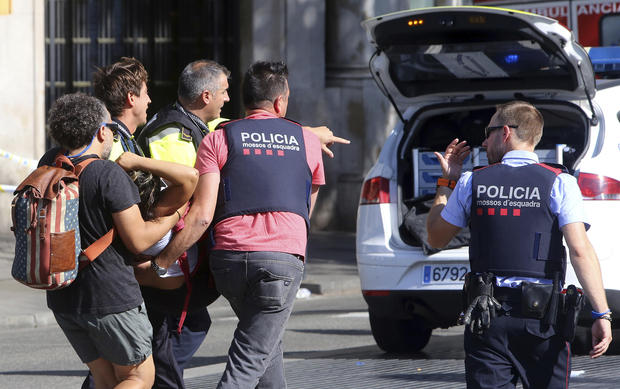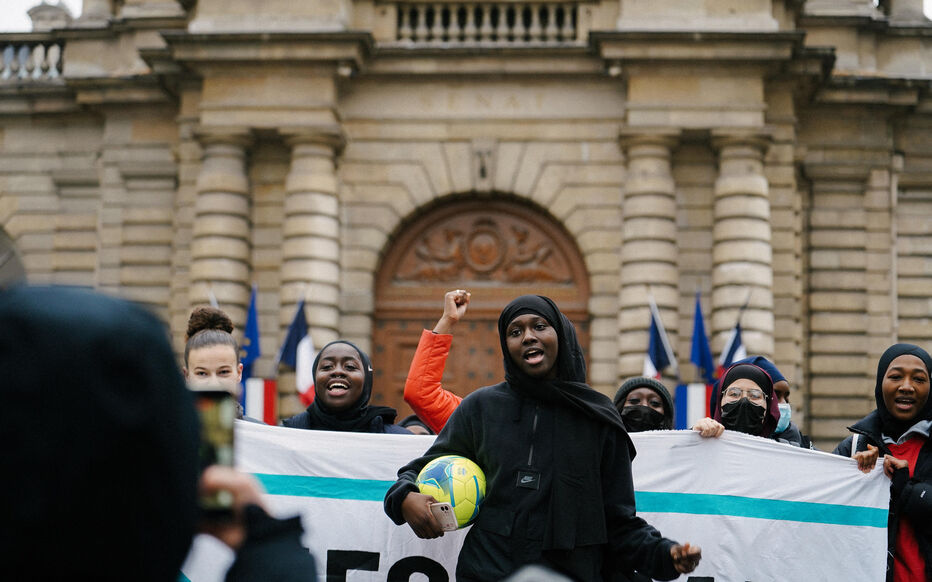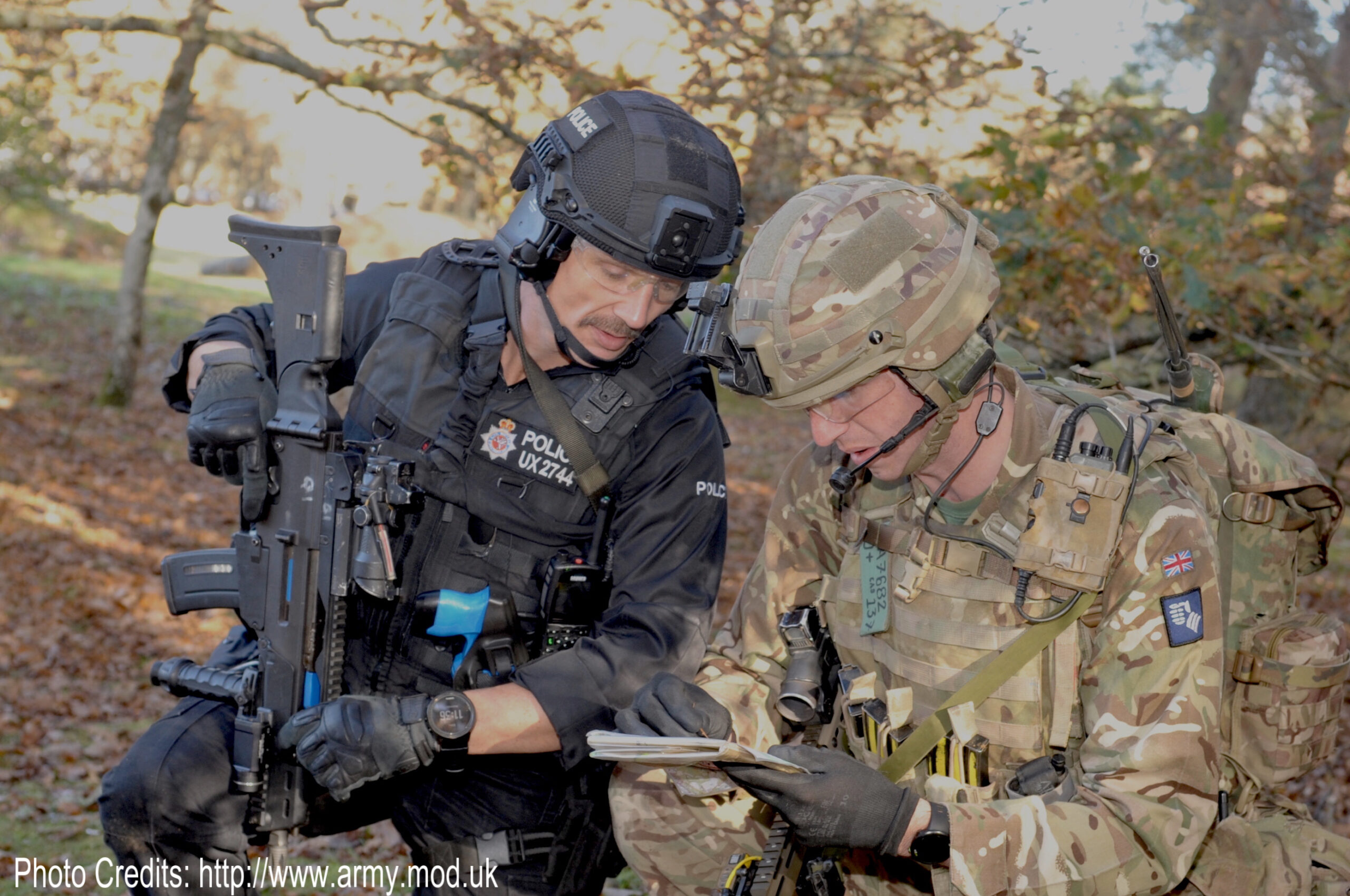The Barcelona Centre for International Affairs (CIDOB) has released a paper called Revisiting the Barcelona Attacks: Reactions, Explanations and Pending Discussions, which examines the discourse and debates surrounding the Islamic State group attacks in Barcelona and Cambrils on August 17th and 18th, 2017[1].
Barcelona Attacks: The Impossible Explanation, The Possible Explanations (Moussa Bourekba)
While discourse and debate around the attacks can seem “to justify studies that focus on religious and cultural aspects of radicalisation processes”, some factors of the attack have raised questions; “the attackers came from a small town on the foothills of the Catalan Pre-Pyrenees and they were apparently well “integrated”; belying common assumptions about links between radicalisation, urban marginalisation and lack of integration”[2]. But, for various suggested reasons, these factors have not been given significant attention[3].
In the aftermath of the attacks, analysis of the attackers and their backgrounds followed the line of reasoning “that a potential relationship can be drawn between nationality and the propensity to commit acts of jihadist terrorism”[4]. However attractive it is to make origin (in this case, the Moroccan origin of the attackers) the main explanatory variable in the attacks, the report states that a more subjective approach must be taken to this analysis, or the risk is run “of turning the radicalisation process into a form of cultural or territorial determinism, instead of focussing on the conditions that allow this phenomenon to take shape”[5].
The report also critiques the concept of integration applied to the attacks, which draws on the relationship between origin and radicalisation discussed above. Bourekba writes that the process of integration has three dimensions; the politico-legal dimension, the socioeconomic dimension, and the cultural and religious dimension; yet often analyses of integration fail to account for all three dimensions of the process, specifically the third dimension, which relates to the feeling of belonging to society and is notoriously hard to measure, yet vital to analyses of radicalisation[6].
Other radicalisation factors need to also be considered. This includes a socioeconomic perspective, which should be combined with “a mapping of the human geography of radicalisation (terrorist networks, places of socialisation, family ties) in order to understand the spread of Salafi-jihadist ideology”[7].
Therefore, debates about radicalisation (what it is, how it happens, and how it should be analysed) are still open, and these debates should be multi-dimensional and multi-disciplinary[8]. Currently, two antagonistic readings, an approach focusing on the religious and cultural dimensions and an approach focusing on the role of socioeconomic background, prevail. Yet, neither explanation delivers a comprehensive understanding of the process leading up to the attacks or the attacks themselves[9]. The need for a more multi-dimensional and multi-disciplinary approach is made more significant by the possibility of the return of hundreds of foreign fighters to European countries[10].
Barcelona Goes Off Script (Blanca Garcés Mascareñas)
In her examination of whether Barcelona went “off script” in its response to the attacks, Garcés Mascareñas writes that “[b]eyond the almost mimetic, ritualised reproduction of grief and condemnation, Barcelona has not declared itself at war either externally or against a supposedly internal enemy”[11]. Instead, messages condemning terrorism, xenophobia, fear, and war were prominent in the aftermath of the attacks, and a climate of ‘us and them’ thus did not grow as it had done in other European cities in the wake of terrorist attacks. The characteristic criminalisation and securitisation of immigrants and ethnic minorities was also not witnessed. Madrid also resisted these common reactions to terrorism after its own attacks[12]. Garcés Mascareñas calls the characteristic response of European cities to terrorist attacks one of “turning the dead into terror and the terror into the politics of fear”[13].
However, just because the ‘us and them’ rhetoric and criminalisation and securitisation were not allowed to manifest does not mean that elements of these characteristic reactions were not witnessed[14]. This happened mainly in the context of the debate around Catalonian independence and how the terrorist attacks would affect the campaigns of either side of the debate. A similar response was witnessed after the Madrid attacks, but instead of debate being along the national axis, it occurred along the left-right axis[15].
Garcés Mascareñas concludes, “[t]he fact that in both Barcelona and Madrid the elephant ran in an unexpected direction only confirmed one fact: when we talk about immigration, as well as terrorism, we speak about nothing more than ourselves”[16].
Ten Days in August (Jordi Moreras)
Moreras observes that the hard questions that normally come after terrorist attacks were not asked in the case of Barcelona because the dialogue was consumed by debates about Spain and Catalonia. He writes, “[n]ever before has an even of this magnitude been so swiftly followed by a turning of the page with no conclusions drawn about what happened, or citizens being informed. The debate on the issue remains pending”[17].
Terror attacks are followed by a triple response, “which has a palliative effect on our collective consciousness”: political determination (proclaiming the “unity of democrats against terrorism”), security action, and emotional solidarity[18]. “[T]he emotional response overlays the rationalisation of what happened”[19].
This triple response accounts for two thirds of the efforts to establish how events unfolded before, during, and after the terrorist event. The remaining third is comprised of “the activation of an expert discourse which normally combines inductive, deductive and prospective exercises analysing the causes, motivations, ramifications, connections, consequences and other evidence that suddenly appear with regard to the perpetrators of the attacks”[20]. The report intends to address the absence of this analysis in the wake of the Barcelona attacks, and this analysis also “seeks to act as a reminder of how societies mature and learn when they face adversity”[21].
Moreras identifies three features of the attacks that stood out (the failure to detect any sign of the impending attacks, the short mourning period following the attacks, and the way in which Catalonian society viewed the radicalisation process of the perpetrators in light of its perceived “progressive pluralisation”) and analyses how the critical, self-reflective discourse surrounding this was “shelved” in favour of “embracing the always comfortable claim” of the factors involved being external to Catalan[22]. He then provides this analysis[23].
Preventing Violent Extremism to Counter Home-Grown Jihadism: Learning by Doing (Fatima Lahnait)
Lahnait writes of Spain’s long and active involvement with counter-terrorism efforts, and suggests that the threat from Islamist extremism is now the country’s primary adversary. She also identifies the increasing threat from the radicalisation phenomenon as a cause for concern, as it may lead to an increase in home-grown Islamist terrorism[24].
She discusses the drivers of radicalisation, an understanding of which is a “fundamental initial step in effective programming for preventing violent extremism”[25]. She then analyses national action plans for preventing and countering violent extremism, examining the role of local authorities and religious and community leaders involved in this policy[26].
Lahnait outlines a four-step policy cycle of assessment and definition of the issue, considering the most effective response to the identified issue, implementing the programme with the aim of achieving pre-defined objectives, and evaluating the programme to determine whether it met the objectives. Programmes should be formulated based on “a good knowledge of the targeted audience and understanding [of] how the programme would be received in the community in which it would be implemented”. This makes communication vital to the formulation and implementation of successful policy and measures[27].
After examining the Spanish approach to preventing and countering violent extremism, Lahnait then examines the approaches of Denmark, the UK, Germany, Italy, and France, as the different countries put emphases on different actors, values, and strategies in their counter-terrorism efforts[28].
She concludes by observing that there has been a recent shift “from traditional security measures to more holistic approaches” in efforts to prevent violent extremism. She writes, “[b]uilding resilience against violent extremist ideologies at the individual and community levels and addressing the root causes of violent radicalisation became crucial. And there is a clear urgency to address radicalisation and recruitment to violent extremism in prisons as well”. There is a need for more solid evaluations of the effectiveness of programmes designed to prevent and counter violent extremism, and the sharing of good practices among European countries is invaluable. This points to the significance of learning by doing in countering terrorism[29].
The report can be accessed here: https://www.euro-islam.info/cidob-report_02_english/
[1] Bourekba, 2018b, 5.
[2] Bourekba, 2018a, 7.
[3] Bourekba, 2018a, 7.
[4] Bourekba, 2018a, 8.
[5] Bourekba, 2018a, 8&9.
[6] Bourekba, 2018a, 10&11.
[7] Bourekba, 2018a, 11.
[8] Bourekba, 2018a, 15&16.
[9] Bourekba, 2018a, 15.
[10] Bourekba, 2018a, 16.
[11] Garcés Mascareñas, 2018, 27.
[12] Garcés Mascareñas, 2018, 27.
[13] Garcés Mascareñas, 2018, 28.
[14] Garcés Mascareñas, 2018, 27.
[15] Garcés Mascareñas, 2018, 28.
[16] Garcés Mascareñas, 2018, 28.
[17] Moreras, 2018, 31.
[18] Moreras, 2018, 31.
[19] Badiou, 2016, cited in Moreras, 2018, 31.
[20] Moreras, 2018, 32.
[21] Moreras, 2018, 32; see also Muro, 2017, cited in Moreras, 2018, 32.
[22] Moreras, 2018, 32-33.
[23] Moreras, 2018, 33-39.
[24] Lahnait, 2018, 41.
[25] Lahnait, 2018, 42-44.
[26] Lahnait, 2018, 44-45.
[27] Lahnait, 2018, 45.
[28] Lahnait, 2018, 45-52.
[29] Lahnait, 2018, 52.
Sources
Bourekba, M. (2018a) ‘Barcelona Attacks: The Impossible Explanation, the Possible Explanations’ in CIDOB. Revisiting the Barcelona Attacks: Reactions, Explanations and Pending Discussions. CIDOB Report #2. Barcelona, February 2018. pp. 7-18.
Bourekba, M. (2018b) ‘Introduction’ in CIDOB. Revisiting the Barcelona Attacks: Reactions, Explanations and Pending Discussions. CIDOB Report #2. Barcelona, February 2018. pp. 5-6.
Garcés Mascareñas, B. (2018) ‘17A: Barcelona Goes Off Script’ in CIDOB. Revisiting the Barcelona Attacks: Reactions, Explanations and Pending Discussions. CIDOB Report #2. Barcelona, February 2018. pp. 19-30.
Lahnait, F. (2018) ‘Preventing Violent Extremism to Counter Home-Grown Jihadism: Learning by Doing’ in CIDOB. Revisiting the Barcelona Attacks: Reactions, Explanations and Pending Discussions. CIDOB Report #2. Barcelona, February 2018. pp. 41-53.
Moreras, J. (2018) ‘Ten Days in August’ in CIDOB. Revisiting the Barcelona Attacks: Reactions, Explanations and Pending Discussions. CIDOB Report #2. Barcelona, February 2018. pp. 31-40.






